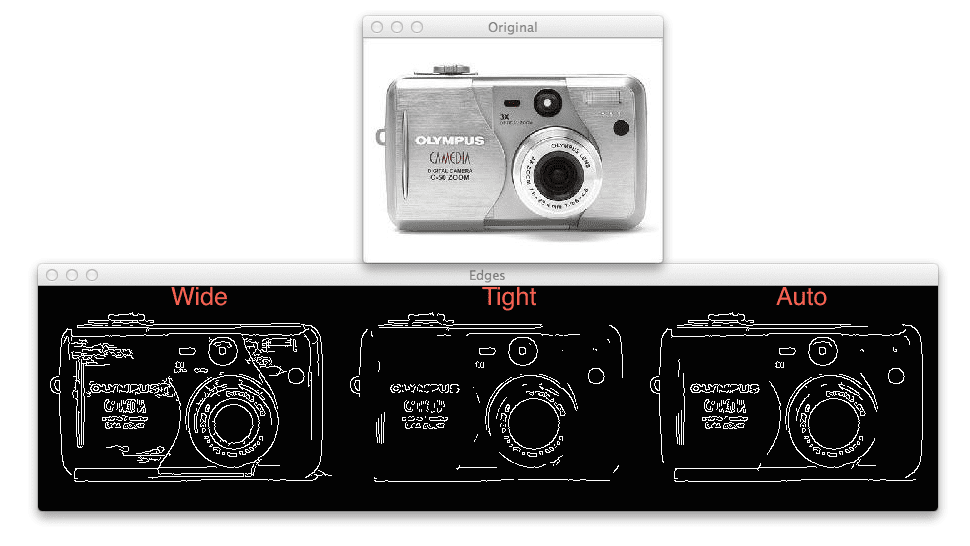Download Open Cv For Mac
- Opencv Mac Build
- Opencv For Linux Download
- Opencv Library Download
- Download Opencv For Mac
- Download Opencv For Mac
Opencv Mac Build
Sep 20, 2020. OpenCV is open source and released under the BSD 3-Clause License. It is free for commercial use. OpenCV is a highly optimized library with focus on real-time applications. C, Python and Java interfaces support Linux, MacOS, Windows, iOS, and Android.
Dec 03, 2018.
Download opencv for free open source computer vision library the open source computer vision library has >2500 algorithms, extensive documentation and sample code for real-time computer vision it works on windows, linux, mac os x, android and ios. Download opencv v2. Install opencv-python in windows download opencv source it can be from sourceforge (for official release version) or from github (for latest source) extract it to a folder, opencv and create a new folder build in it open cmake-gui (start > all programs > cmake-gui).

download opencv v2
Github - daan/calibrating-with-python-opencv: intrinsics
If you need those, reconfigure and rebuild opencv from the source code opencv-220-winzip ----- a subset of the above package that does not contain pre-compiled binaries if you are going to rebuild opencv for your development environment, which is recommended to do, you can download this smaller package. Opencv. open computer vision library. about; releases; courses; resources. books; links; platforms; releases * opencv – 4.2.0. Download latest version opencv-4.2.0-vc14_vc15.exe (215.8 mb) get updates. get project updates, sponsored content from our select partners, and more.
OpenCV released OpenCV-3.4.4 and OpenCV-4.0.0 on 20th November. There have been a lot of bug fixes and other changes in these versions. The release highlights are as follows:
- OpenCV is now C++11 library and requires C++11-compliant compiler. Minimum required CMake version has been raised to 3.5.1.
- A lot of C API from OpenCV 1.x has been removed.
- Persistence (storing and loading structured data to/from XML, YAML or JSON) in the core module has been completely reimplemented in C++ and lost the C API as well.
- New module G-API has been added, it acts as an engine for very efficient graph-based image procesing pipelines.
- dnn module now includes experimental Vulkan backend and supports networks in ONNX format.
- The popular Kinect Fusion algorithm has been implemented and optimized for CPU and GPU (OpenCL)
QR code detector and decoder have been added to the objdetect module. - Very efficient and yet high-quality DIS dense optical flow algorithm has been moved from opencv_contrib to the video module.
In this post, we will provide a bash script for installing OpenCV-4.0.0 (C++ and Python 3.7) on macOS – High Sierra and Mojave. We will also briefly study the script to understand what’s going in it. Note that this script will install OpenCV in a local directory and not on the entire system. Let’s jump in 🙂
1. Install XCode
Install XCode from App Store.

If XCode available on App Store is not compatible with your OS:
- Find XCode version compatible to your OS from this table https://en.wikipedia.org/w/index.php?title=Xcode#Version_comparison_table
- Go to this webpage https://developer.apple.com/download/more/
- Login if you have apple developer account else create your account and login.
- Search for xcode and download the version compatible to your OS.
- Install XCode.
- After installation open XCode, and accept xcode-build license when it asks.
2. Install OpenCV
Now that XCode has been installed, we will move on to OpenCV installation.
First, let’s install Homebrew.
We will also add Homebrew to PATH.
Next we will install the requirements – Python 3, CMake and Qt 5.
We will also save current working directory in cwd variable and OpenCV version (master) in cvVersion.
Now, let’s install the Python libraries and create the Python environment.
Next, let’s clone the OpenCV github repositories.
Finally, we will use CMake to build OpenCV.
 Open same Dropbox account on your browser or Mac and upload Ship Tycoon APK there. Once done, you will find in the app drawer. Now open Bluestacks, download APK onto emulator and install it using Android’s APK installer.
Open same Dropbox account on your browser or Mac and upload Ship Tycoon APK there. Once done, you will find in the app drawer. Now open Bluestacks, download APK onto emulator and install it using Android’s APK installer.
And that’s it! By now you should have OpenCV installed successfully in your system.
3. Test OpenCV Installation
3.1. OpenCV in Python
To use cv2 module in Python, we will first activate the Python environment. Belarc advisor program.
Next, let’s import the module and verify the OpenCV Version installed.
Opencv For Linux Download
3.2. OpenCV in C++
To use OpenCV in C++, we can simply use CMakeLists.txt and specify the OpenCV_DIR variable. The format is as follows:
Make sure that you replace OpenCV_Home_Dir with correct path. For example, in my case:
Once you have made your CMakeLists.txt, follow the steps given below.
This will generate your executable file in build directory.
Hope this script proves to be useful for you :). Stay tuned for more interesting stuff. In case of any queries, feel free to comment below and we will get back to you as soon as possible.